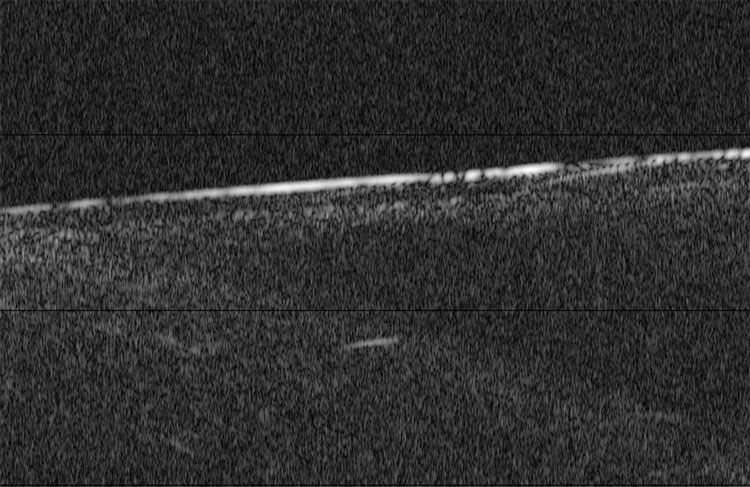Disclosure is little known about the plan to explore ice on Mars
Finding the signs of ice on Mars is very complicated. To explore the ice below the surface of the Red Planet, ESA's Mars Express uses radar for internal exploration to be used.
The new radar system will send low-frequency radio pulses on the Martian surface and record data then return to the Mars Express spacecraft .
These pulses can penetrate a number of materials including the Mars planet's crust to probe different densities or components beneath the surface.

This image shows radar waves emanating from Meridiani Planum, an area near the equator of Mars.(Image source: Phys).
In the image, radar reflection data simulates a white line across the Martian surface marking frame reflecting a layer of buried material beneath the surface.
The surface of Meridiani Planum is full of volcanic sand, known to contain minerals that form in the presence of water in the distant past of this planet.
Previously, it was unclear what kind of material lay below the surface, but Mars Express radar has now penetrated the mines and revealed that they have similar properties to sea ice .
Other geological materials such as volcanic ash or very fine dust, a thick layer of sand-sized particles can be a rich form of ice deposits.
These results will help scientists identify areas with accessible ice: they are an important resource to explore future human life on Mars.
- NASA's bee bee exploration plan
- How to bring Martian stones to Earth?
- Video: NASA can use unmanned aircraft to explore Mars
- NASA's seven-minute scare is about to land on Mars
- 5 videos tell you Elon Musk's detailed plan to bring people to Mars
- Russia and Europe will explore Mars together
- China aspires to set foot on Mars in 2030
- NASA postponed the mission to explore Mars
- Journey of 50 years of exploring Mars
- Prepare to
- NASA announces a group of astronauts who are on a mission to explore Mars
- Elon Musk's crazy talk: $ 100,000 for the price of Martian citizens
 Announced 3 houses on the Moon and Mars
Announced 3 houses on the Moon and Mars Science proves: Mars also knows 'deflated'
Science proves: Mars also knows 'deflated' Elon Musk announced the price for a Mars trip was 11.6 billion VND, free of charge
Elon Musk announced the price for a Mars trip was 11.6 billion VND, free of charge NASA discovered strange 'gate' on Mars, is the hiding place found?
NASA discovered strange 'gate' on Mars, is the hiding place found?